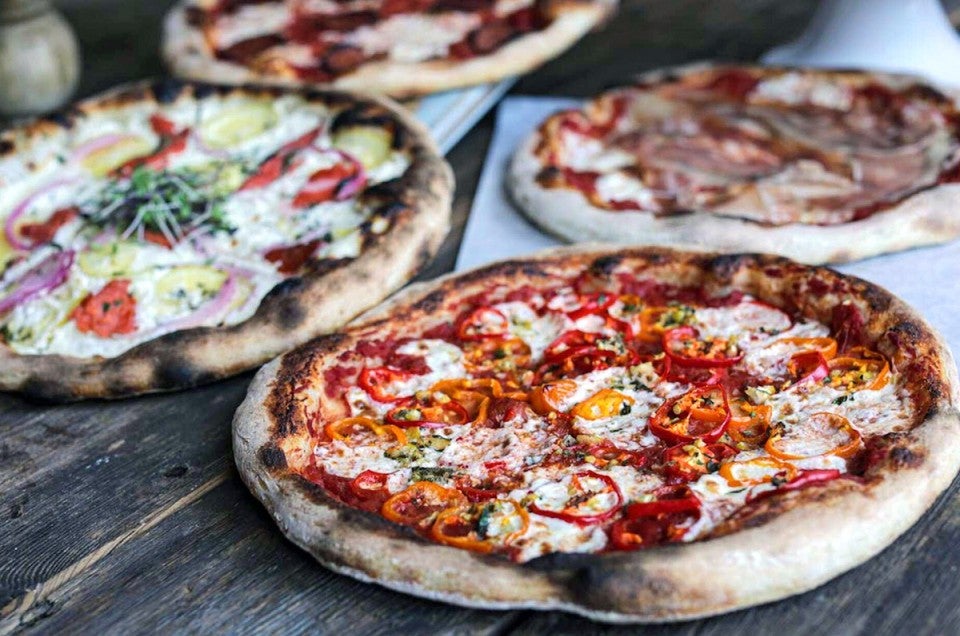


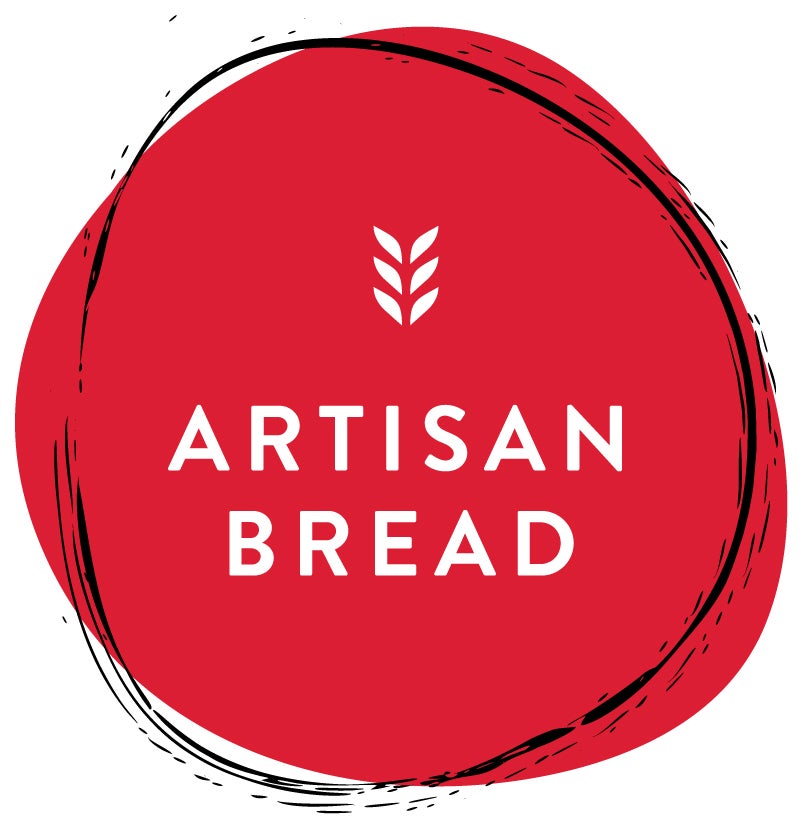 Our Artisan Bread series explores the world of professional-level bread baking and brings you more resources and guidance around how to hone your skills at true hand-crafted bread. You'll find tools, inspiration, and confidence to experiment and master what is perhaps the simplest, and the most complex, of baking genres: artisan bread.
Our Artisan Bread series explores the world of professional-level bread baking and brings you more resources and guidance around how to hone your skills at true hand-crafted bread. You'll find tools, inspiration, and confidence to experiment and master what is perhaps the simplest, and the most complex, of baking genres: artisan bread.
* * *
I’ve been slinging pizza at home ever since I was a teenager, which means I’ve been at it for more than 35 years now. And I can say without question that we are living in the golden age of home pizza making right now. Whether thanks to the new generation of tools and home-scale pizza ovens, or to the increasing sophistication of pizza recipe writers and teachers, it’s never been easier to make restaurant-caliber pies at home.
Way back when I was just a teenage wannabe pizzaiolo, my options were far more limited. If memory serves me, the pizza cookbook I got as a birthday gift back then described how to make one kind of pizza: a round, thin-crust pie that was generically “Italian,” but not otherwise tied to any particular style of pie.
Nowadays, pizza cookbooks, websites, and online recipes abound, covering in detail how to craft all manner of pizza styles, thick or thin, round or square, Italian, Italian-American, and beyond.
So what exactly goes into making stellar professional pizzas and how can one achieve similar results at home?
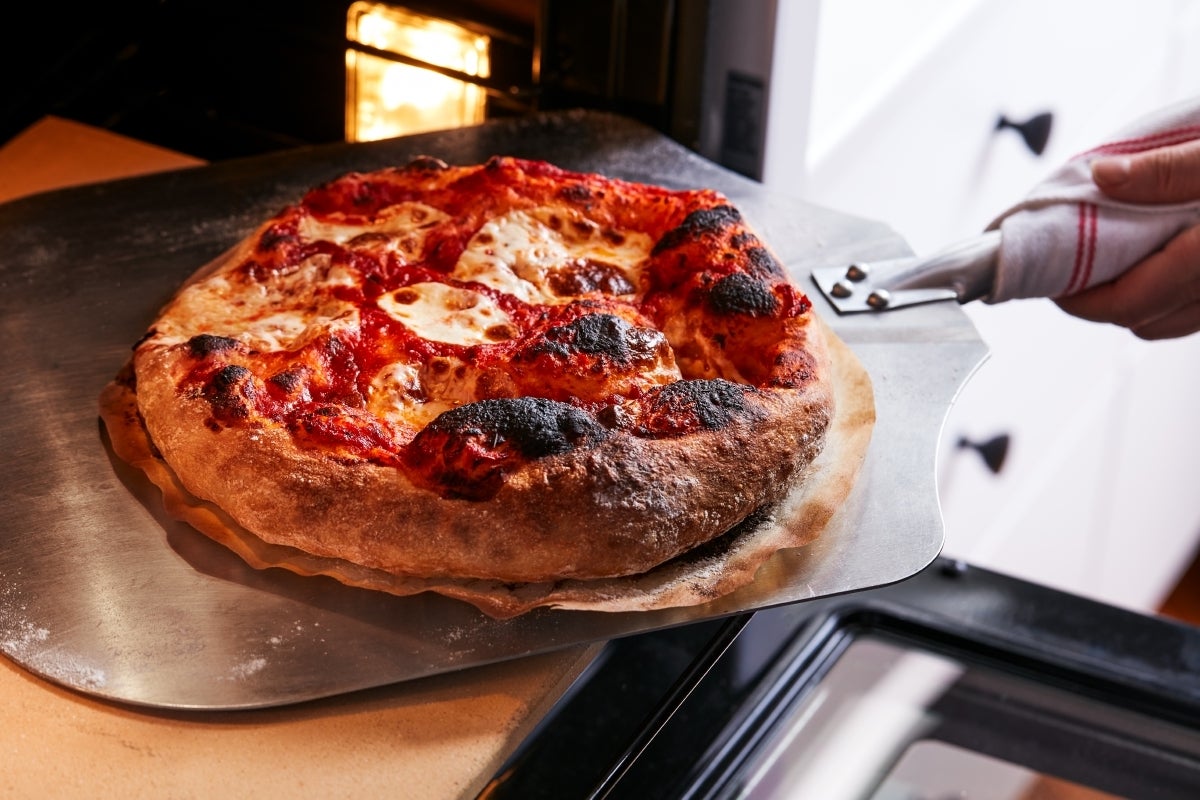
Back then, tools for making good pizza at home were limited. For that same birthday, I got a perforated pizza pan to bake my pies on, and that seemed like the height of "fancy" equipment at the time. Pizza tools like baking surfaces, pans, peels, and cutting wheels have become available and have seen serious upgrades in recent years.
Not to mention all the new pizza ovens. While it's entirely possible to wrangle delicious, pizzeria-quality pies out of a standard home oven, there are also now a wide range of affordable and effective dedicated pizza ovens that can take your at-home pies to the next level if you're really looking to get serious about making pizza regularly at home. (We'll be covering all of this and more in our upcoming article on tools and techniques for the home pizza maker at the end of this month, so stay tuned for a deep dive.)
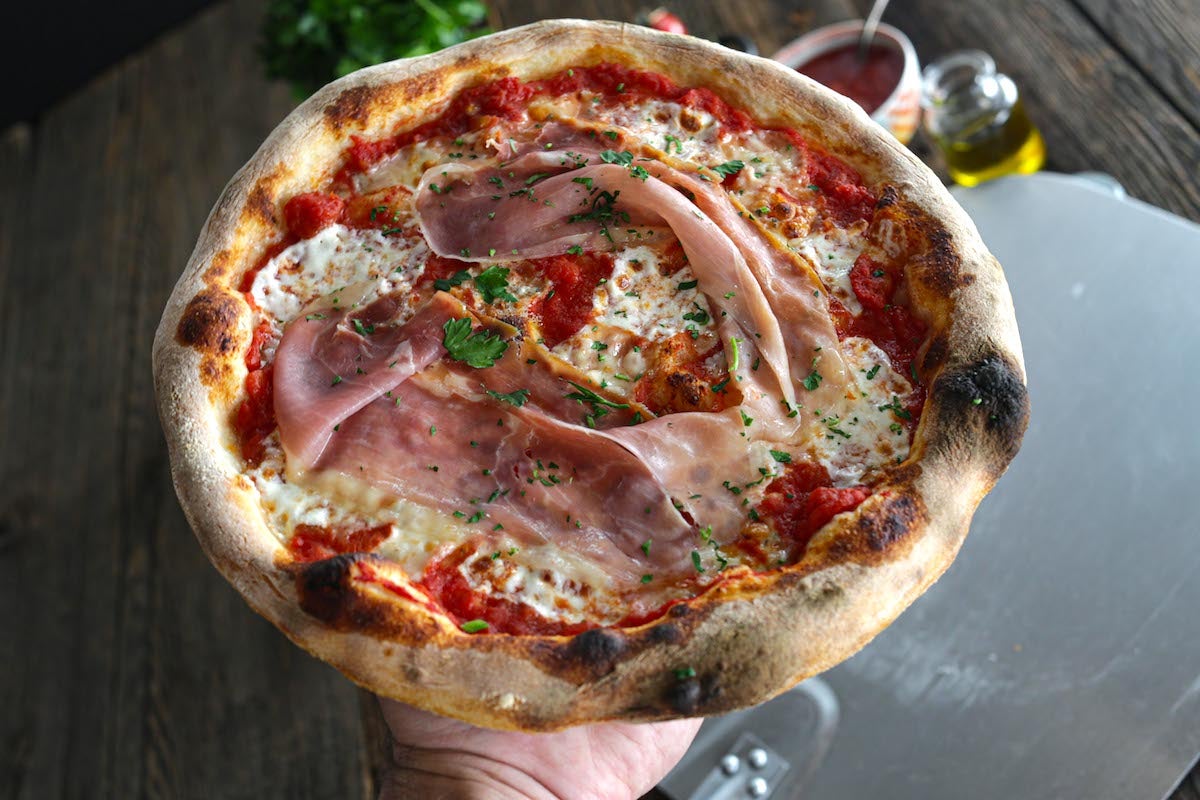
Great artisan pizza starts, almost paradoxically, with the bake. Consider the Neapolitan, the pie that launched all the others. It has a blistered, charred exterior and a verging-on-soupy interior that requires the use of a knife and fork to eat. Baked in 90 seconds or less in wood-fired ovens at temperatures upwards of 1000˚F, it's the ultimate illustration of the pizza maxim that hotter and faster is almost always better. The quicker a pie cooks, the greater the contrast between exterior and interior texture, and while the inside/outside contrast of a Neapolitan pie is extreme, it’s always a goal, no matter which style of pie. Think of it as a race to cook the exterior — the crust and the toppings — before the interior crumb overcooks.
The emphasis on heat doesn't mean that recipes don’t matter; in fact, quite the contrary.
While turning up the heat can improve the quality of just about any pie, a superlative pizza requires careful consideration of dough formulation, fermentation, and handling.
Different styles call for different flours: The distinctive chewy-crispy crust of a New York slice demands a high-gluten flour, while more tender pies call for softer all-purpose or Italian “00” flours. How much water goes into a dough matters too: Generally speaking, more water yields a softer, more tender result. But since water also inhibits browning, it cannot be considered in isolation of oven temperature; in other words, the hotter the oven, the more water a dough can handle.
Great pizza can be made using commercial yeast, sourdough, or even a combination of both. What matters more is how fermentation proceeds; many of the best pizzas (like this New York-style sourdough Cubano pizza) are made using a slow, cool (fridge-temp) fermentation, often over many days. This serves a few purposes: One, it builds complexity of flavor, without the pie ending up overly yeasty or sour. Two, it keeps the alveoli (hole structure) in the dough fine, important for yielding an even, thin crust. And finally, it allows time for the dough to relax, so that it can be stretched thinly and easily without springing back or turning tough from being overworked.
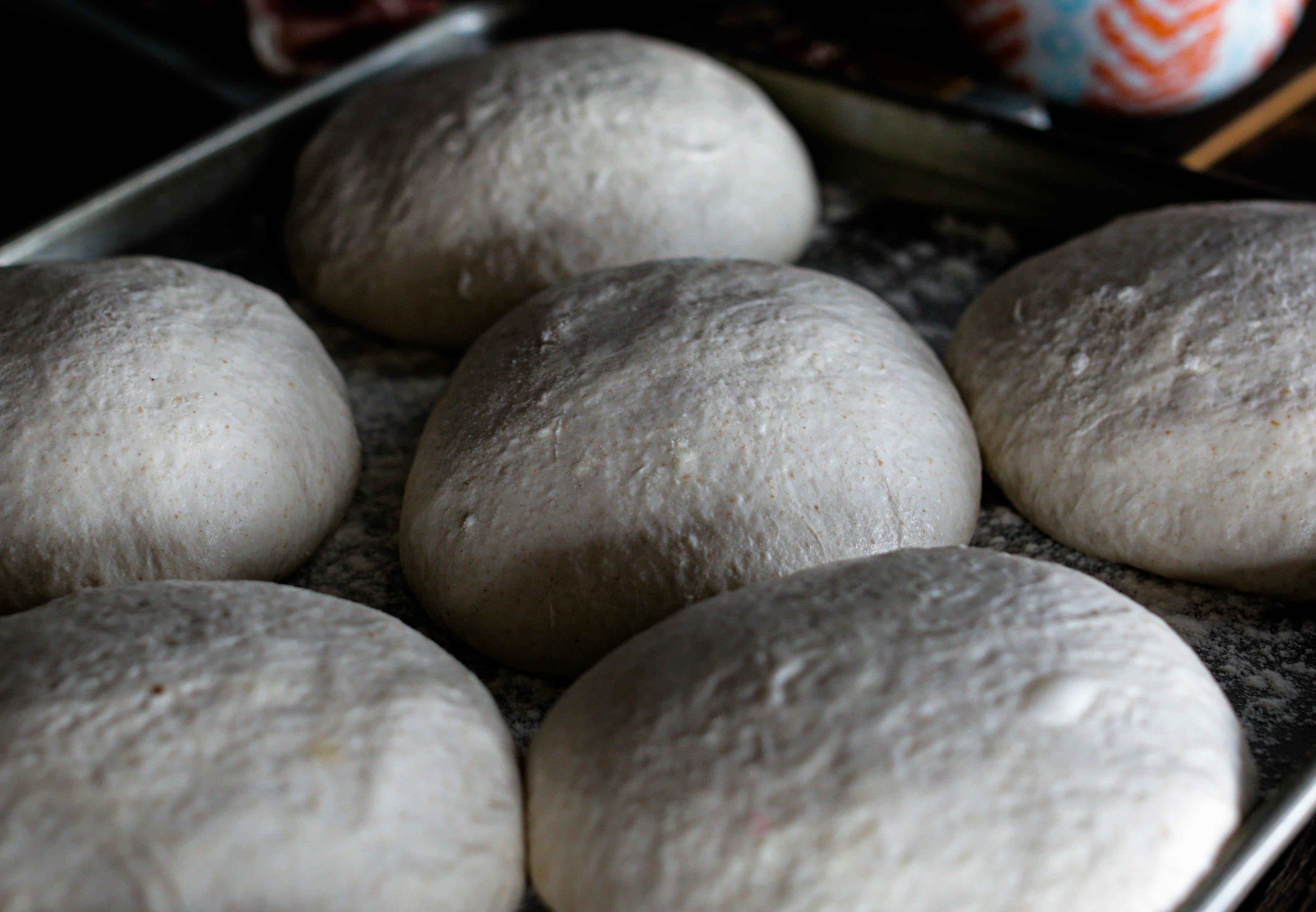
Finally, there’s dough handling technique to consider. While spinning pizza dough in the air acrobatically can make for great entertainment, in terms of results what’s more important is the use of a light, delicate touch. The less a dough is handled prior to baking, the less likely the dough will turn elastic and toughen up.
Of course, methods and recipes must be tailored for the style of pizza in question. After the Neapolitan, these are a few of the best-known and best-loved types of pizza, though these only scratch the surface of all the varieties out there, from Grandma-style to St. Louis-style:
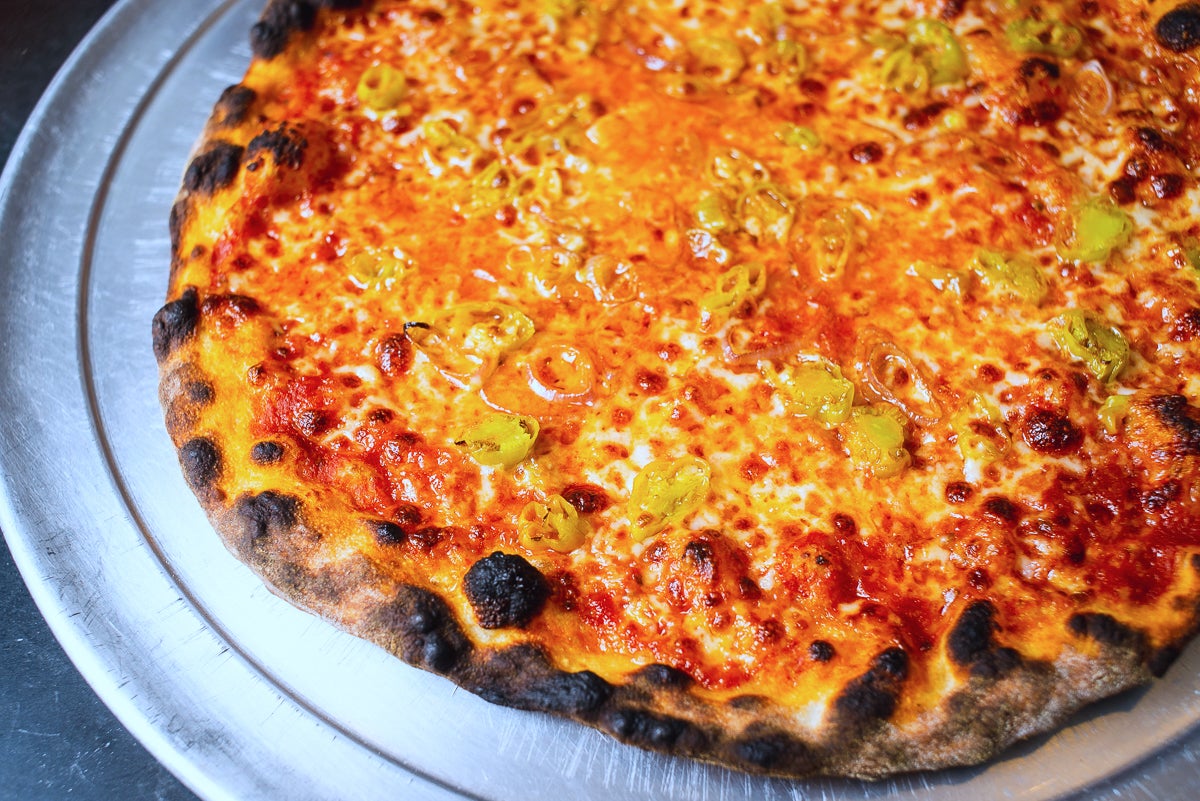
The New York thin-crust pizza is of course America’s original pie, invented by Neapolitan immigrants in New York City in the early part of the 20th century. It’s characterized by a crispy crust, and a pleasantly chewy crumb (thanks to the use of high-gluten flour) with a puffy rim and a very thin interior crust. It’s typically baked in gas or electric ovens at more modest temperatures than Neapolitan pizza, making it one of the easiest to replicate in a home oven.
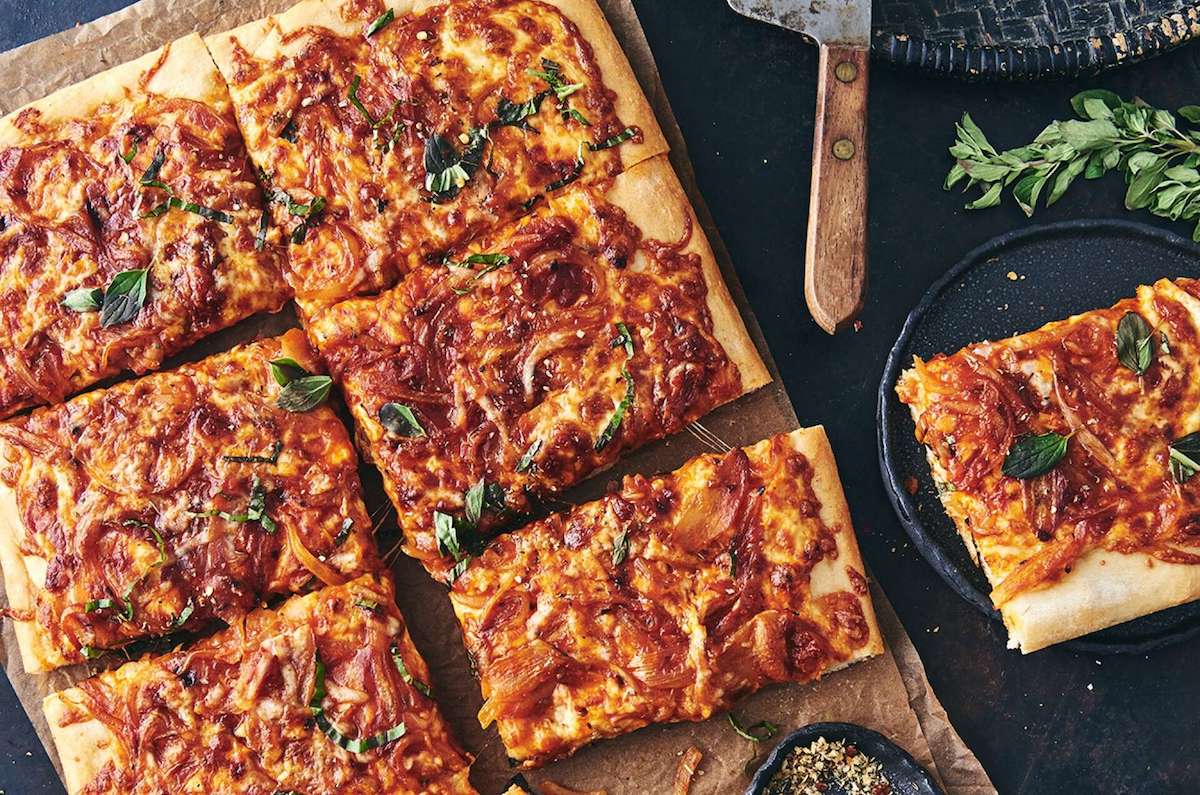
Sicilian pizza is baked in pans and cut into squares, and has a thick and puffy crust. It’s sometimes topped “upside down,” with the cheese underneath the sauce, which keeps it melty and oozy. Because it's so thick, it's baked at modest temperatures to ensure it cooks evenly, making it another option that's easy to replicate at home.
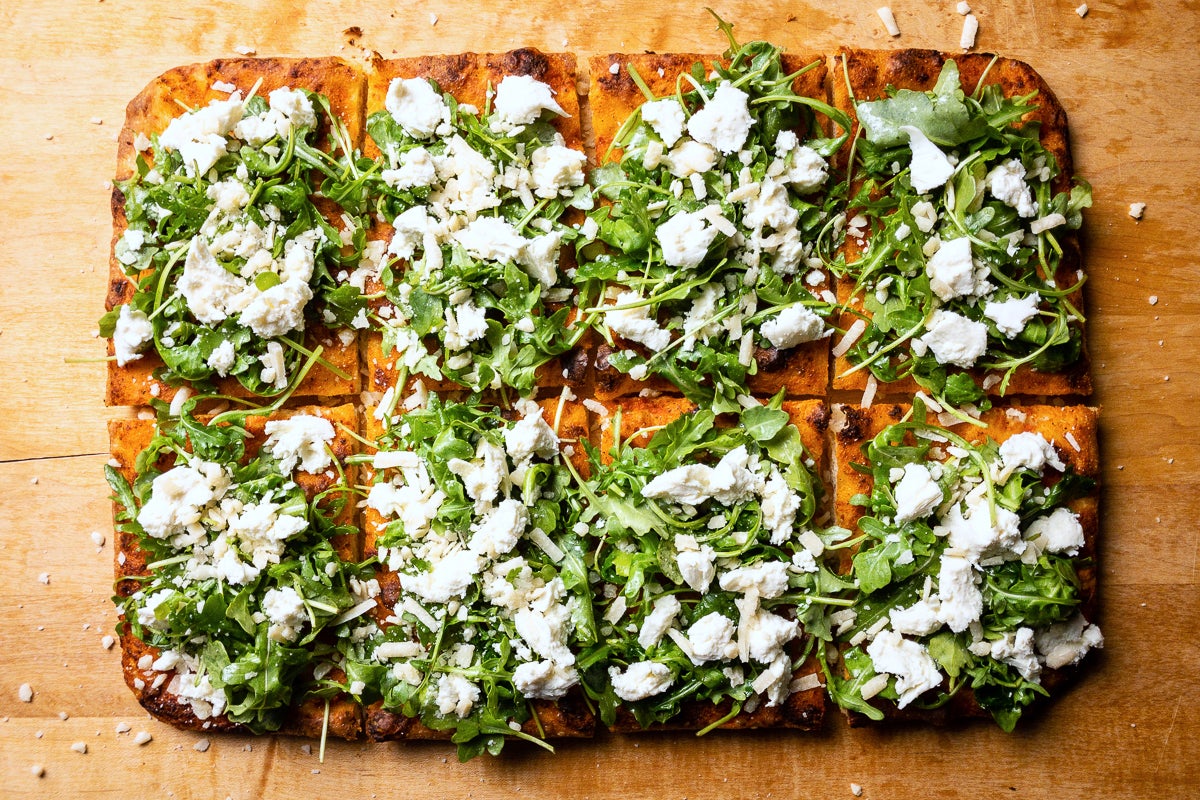
Pizza al taglio is another square-cut pan pizza that originates from Rome. It’s name means “pizza by the cut,” referring to the way it's cut to order, often using scissors. It’s thinner than Sicilian, with a more airy crust. Al taglio is also unique in the way it's topped: It’s often loaded with fresh ingredients after it's baked, making it something of a cross between a pizza and an open-faced sandwich.
Detroit-style pizza is an additional pan pizza dreamed up by Italian immigrants in America. It’s characterized by a very thick crust with an extraordinarily crisp underside, thanks to the high-sided, black steel pans — originally intended for use in the automotive industry — in which it's baked. It’s usually topped with cheese from edge to edge, giving it a crisp, crown-like rim, and sauced on the top in stripes, leaving some of the cheese exposed.
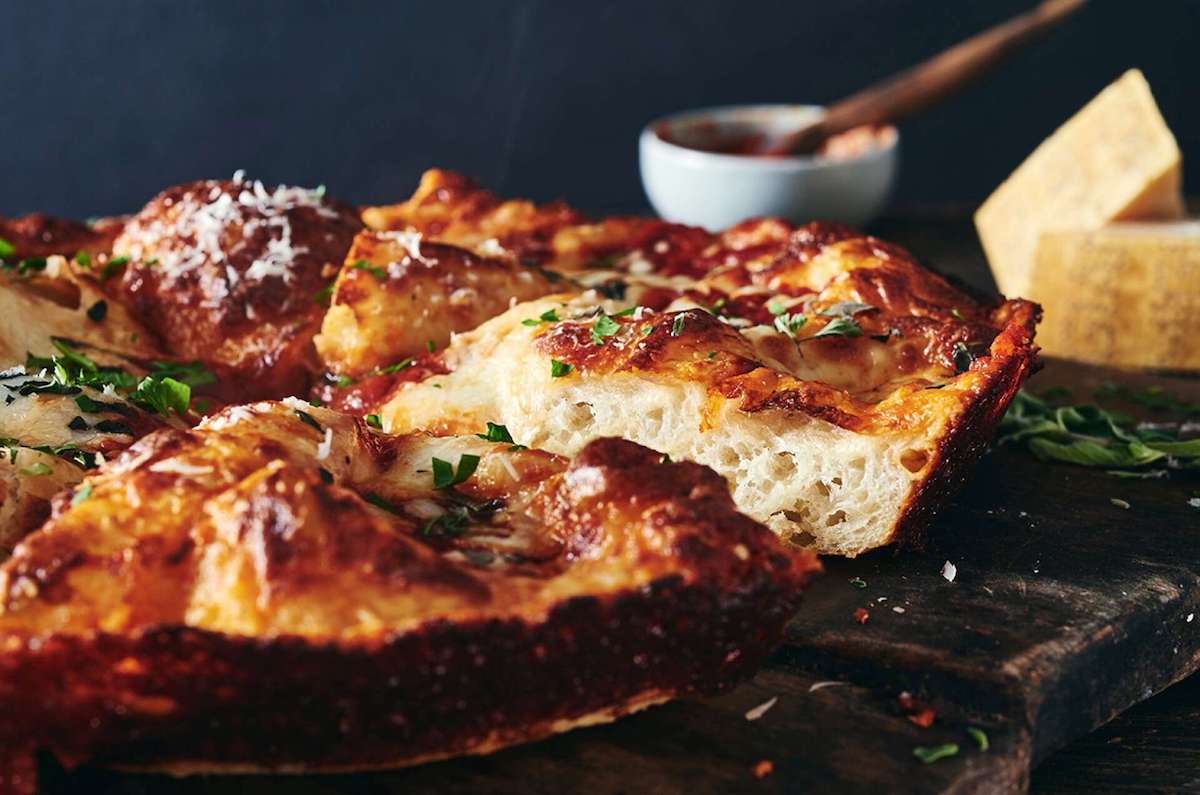
Grilled pizza is another American pizza innovation, first created at Al Forno restaurant in Providence, RI. It’s made by cooking a thin, oblong sheet of dough on a grill on both sides until it’s cracker-crisp, then topping it lightly with sauce and quick-to-melt cheeses. It's returned to the grill briefly to heat through, then sometimes topped with fresh ingredients off the grill.
With so many styles to choose from, it's important to start with a solid recipe. The ingredients in pizza dough are simple and straightforward; rather, it's the recipe (method, hydration, timing, and so on) that determine the final result.
As we touched on earlier, the topic of home ovens and high heat is crucial for any home baker looking to up their pizza game — something we'll cover in depth later this month. (The important thing to know is that you can make superior pizza in any old home oven!) All of this advice, and every pie you make, will bring you closer and closer to the blistered, chewy crusts of every pizza lover's dream.
For more artisan bread tips, find the rest of our Artisan Bread Series here.